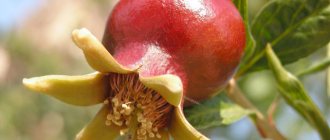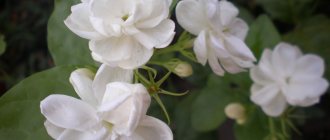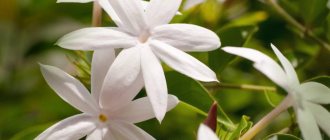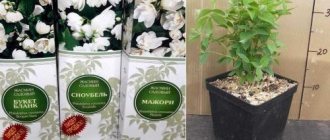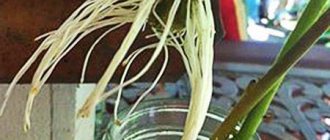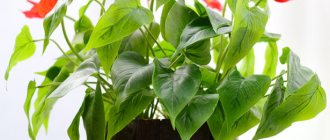Propagating jasmine at home is A great way to get a large number of flowers for your garden without spending extra money. In addition, growing flowers in your garden will not only give you exact copies of your favorite variety, but will also allow you to develop a variety that is resistant specifically to your climate zone.
Jasmine is propagated in four ways: planting seeds, rooting cuttings, division and layering. As a result of each method, you will receive strong, resilient seedlings, which can subsequently be transferred to open ground or to an indoor pot. There are more than 200 varieties of jasmine, each with its own special characteristics, as well as requirements for cultivation, care and propagation.
Frost-resistant species can grow even in northern latitudes, but there are also those that will not survive even minimal frosts on the soil. Before you start growing and propagating jasmine, you should choose the variety that is most suitable for certain climatic conditions. The first brood is obtained thanks to seedlings from the nursery or seeds purchased at the nearest gardening store. So, let's look at all the ways you can propagate garden jasmine.
Propagation of jasmine by seeds
Collecting seeds
How to propagate jasmine from seeds? First you need to collect fresh seeds from the plant. By the end of summer, instead of jasmine flowers, small seed pods similar to bean pods will appear. At the beginning of September, it is already worth taking a closer look at the testes so as not to miss the moment of their final maturation and opening.
If this moment is missed and the pods open, the seeds will be scattered, and collecting them from the ground will become quite a task. Look for pods that turn brown, as this is a sign that they are ripe and about to burst.
Tip: in order not to miss the opening period of jasmine seeds, wrap the pods in a small gauze bag so as not to damage the stem. When the time comes to “burst”, all the seeds will be inside the gauze.
Growing seeds
It is necessary to start sowing seeds at home at least 6 weeks before the expected last frost. If jasmine flowers are used as indoor plants, you can start growing them at any time of the year. Next we perform the following sequence of actions:
- To soften the seed skins a little, soak them in warm water overnight before planting.
- To grow seeds, use a universal soil mixture purchased at a gardening store or prepared soil yourself in the ratio: 2 parts peat, 1 part perlite and 1 part compost.
- Plant the soaked seeds in a pre-prepared soil mixture, drowning them 1-2 cm into the soil and covering them with a small amount of soil on top.
- It is best to plant in shallow, oblong trays , which will be conveniently located on the windowsill, and watering them will not cause trouble.
- Next, the trays should be stored indoors at a temperature of +21-23 degrees. To stimulate the appearance of sprouts, they can be placed on a sunny windowsill for about 6-8 hours a day.
- Watering is carried out regularly, do not let the soil in the trays dry out, but do not overwater.
- Seeds germinate very slowly, and the first shoots can be expected in about 1 month.
Transplanting seedlings from a tray
How to plant jasmine seedlings? When the first shoots reach 5-7 cm in height, the plant should be transferred to a flower pot (if they will be grown indoors) or to a peat pot (if they will be planted in open ground in the future).
It is better to prepare the soil for replanting yourself in the following composition:
- 1 part universal primer;
- 1 part crushed bark;
- 1.5 parts perlite;
- 1 part fresh compost.
Carefully dig up the seedling and transfer it to a pot. Do not compact the soil with your hands, but simply water it generously until the soil settles on its own. Next, water regularly for 2-3 weeks, periodically fluffing the soil.
Attention ! Before the first transplant, carefully inspect each seedling for rotting roots or the appearance of mold or black spots on the plant. Such seedlings are destroyed.
Proper care of plantings
The success of jasmine propagation and its subsequent decorativeness will directly depend on the correct care of the plants. Young sprouts will need timely and regular watering. In this case, the soil should not be too wet and in no case dry. For irrigation, use exclusively warm, settled water, but not cold water from a well.
The tree trunk around young plants should be loosened weekly, which not only preserves moisture in the soil, but also improves the oxygen supply to the roots. As soon as the seedling begins to grow, its obligatory hilling begins. This procedure has a positive effect on the overall development of this plant.
Homemade indoor jasmine will require regular watering, the application of mineral fertilizers and maintaining optimal temperatures, which for this crop are 20−25 °C. Growing such a lush ornamental bush on a windowsill is not difficult. Later in the summer, you can plant and root homemade jasmine, planting it in your garden plot.
In the first few years, the jasmine crown will not yet be formed, so the cuttings should be tied to a small support, which will prevent them from being damaged by strong winds. Typically, such a peg is removed in the second or third year after planting. Experienced gardeners also recommend pinching the top of the shoot next spring, which stimulates branching and improves the decorative appearance of the seedlings.
Jasmine responds positively to fertilization, which not only accelerates its growth, but also stimulates active, long-term flowering. It is best to feed young bushes with special mineral mixtures intended for decorative deciduous plants. Such seedlings quickly gain green mass and begin to bloom the very next year after planting. Subsequently, during the growing season, you can feed the plants 1-2 times with a light solution of mullein or bird droppings.
Propagation of jasmine by cuttings
Jasmine can be propagated by cuttings both in summer and spring:
- Select a healthy, firm stem that has grown this year. A dark green stem with several rows of leaves on it will work best.
- You can take 1-3 seedlings from each donor bush.
- Choose cuttings with a reserve, as some seedlings may not take root.
- For pruning, small garden shears are used to cut stems 10-15 cm long.
- It is best to cut the stem just below the leaf. Roots are more likely to appear if the cut is made directly below a leaf node.
- Remove leaves from the bottom of the cutting. Make sure there are no leaves underground as this will cause the plant to rot. There should be at least 2 leaves left at the top of the cutting.
- Removing most of the leaves helps balance growth between future roots and remaining leaves.
Attention ! Do not use cuttings that have seed pods at the end, as the stem will transfer all the nutrients to the seeds.
To propagate mock orange from cuttings, prepare a container or pot for growing the cuttings. It is best to use a universal nutrient soil that can be mixed with compost in advance. The cuttings are placed at a distance of 3-5 cm. Several cuttings can also be grown in one pot at the same time, and in the future they can be planted. The pot or container must have sufficient holes for drainage.
- Moisten the soil generously with water. You should not water the cuttings after you place them in the soil, since at the very beginning there are no roots that will absorb this moisture.
- Use a pencil or similar thin stick to prepare holes in the soil the size of the cuttings.
- The size of such a hole should be slightly wider than the stem of the cutting (literally a few millimeters).
- The cut end of each cutting is pre-moistened in a special hormone composition to accelerate root growth, and then inserted into the hole. There is no need to keep the stems in this solution. The ideal solution would be to use a dry mixture to stimulate root growth - simply dip the cut into this powder and insert the cutting into the hole.
- Lightly press the soil around the cutting so that it does not wobble in the soil.
- Cover the container with plastic to create a greenhouse effect. Each cutting can be separately covered with a cut plastic bottle. The main thing in this process is that the oilcloth or bottle should not touch the handle, otherwise it will lead to the formation of mold.
- Periodically, 1-2 times a week, open an improvised greenhouse and irrigate the ground with water from a sprayer.
- Cuttings in trays or pots are placed on a sunny windowsill (at least 6-8 hours of daylight).
After 4-6 weeks the plant will finally take root. You can check the number of roots using one cutting from the container. You can transplant into open ground or into another pot for indoor growing. When transplanting, you will be able to inspect the roots of each seedling.
Plant Features
Most varieties and varieties of garden jasmine are erect shrubs, the height of the shoots ranges from 80 centimeters to 4 meters. These are ornamental plants that, during the flowering period, which lasts several months, are literally dotted with snow-white, pink, and yellow flowers, thereby decorating the local area. Today, gardeners know more than 300 types of jasmine, which differ in their appearance and cultivation techniques.
The most common varieties of jasmine are:
- sambac;
- Chinese;
- flattened;
- shrubby;
- Jasmine Lerata;
- drug;
- multifloral.
Most of these plant species are heat-loving crops, so in Russian conditions they can be successfully grown and propagated in the southern regions. White medicinal and shrub jasmine take root well in the middle zone. The latter has delicate large-sized yellow and white flowers, which are distinguished by their excellent decorative effect and ease of care. You can also find various hybrids on sale, but guaranteeing their grade and subsequent long-term preservation of all characteristics when propagating such plants will be problematic.
Jasmine is a low-maintenance ornamental crop that most gardeners can handle growing and propagating. All that needs to be done is to feed the plants several times, water them in the hottest weather, and in the fall, before the onset of cold weather, cover the roots and pruned vines with spruce branches. Timely pruning of such shrubs has a positive effect on its decorative properties, preventing plant thickening and stimulating abundant and long-lasting flowering.
Reproduction of mock orange by layering
Reproduction by layering is quite simple in 4 steps:
- Bend a branch on the mother bush into a "U" shape so that the leaf node touches the ground. The leaves themselves are removed in this place.
- Press the stem into the ground at the bend with your finger, but do not break it. For fixation, you can use a “U” shaped piece of wire.
- Keep the soil moist but do not overwater. Roots will appear in 2-3 months.
- Wait until the first pair of leaves appears on the cutting, after which you can cut the branch from the mother plant.
Next, transplant the cuttings into a new pot or open ground.
Propagation of jasmine by dividing the bush
How does jasmine propagate by dividing the bush? This method is not very popular, since old bushes have a highly branched root system, and removing them from the ground without damaging them becomes quite a difficult task. However, young bushes (1-2 seasons) can be easily divided.
- Dig up the plant bush, shake off the soil from large tubers and jerk all the soil out of the root system. This must be done carefully so as not to damage the roots of the flower.
- Place the bush on a flat surface and try out how best to divide the root. For each bush, the division will be individual and not necessarily in half.
- Divide the bush with your hands so that each part has at least 2-3 full stems.
- Each part of the bush is returned to the soil or pot and watered abundantly.
It is better to divide the bush in the fall. You can carry out the procedure in the summer, the main thing is to do it during the period when there is a minimum number of flowers on the bush. Planting is always carried out in a sunny area. Later, when the plant takes root, it can be transplanted to another location.
Similar articles:
How to propagate a money tree - several ways
How to propagate Decembrist - several ways
A guide to propagating geraniums from cuttings -...


